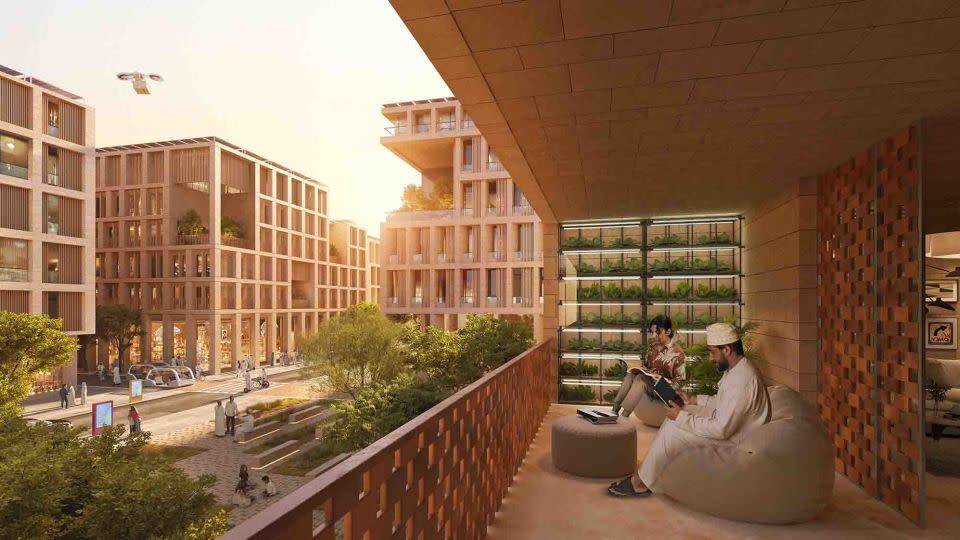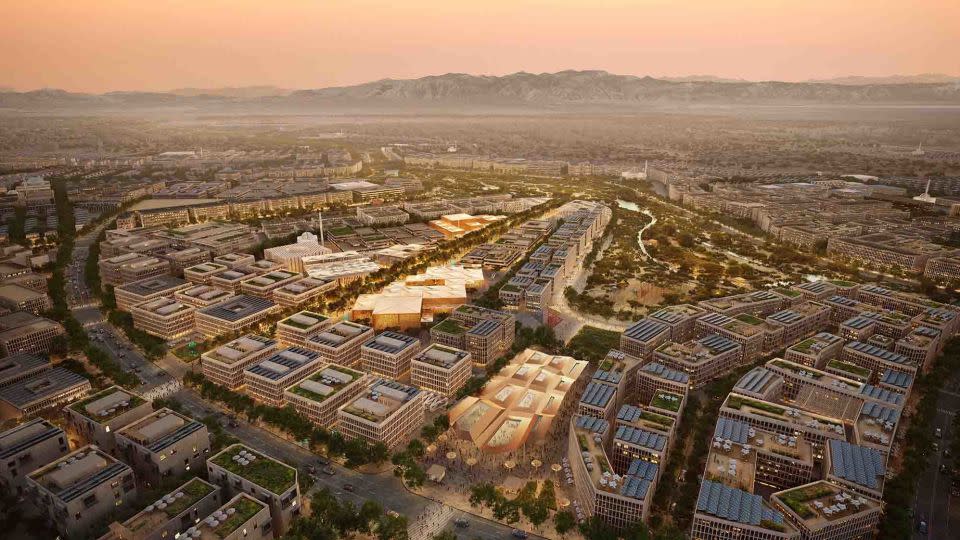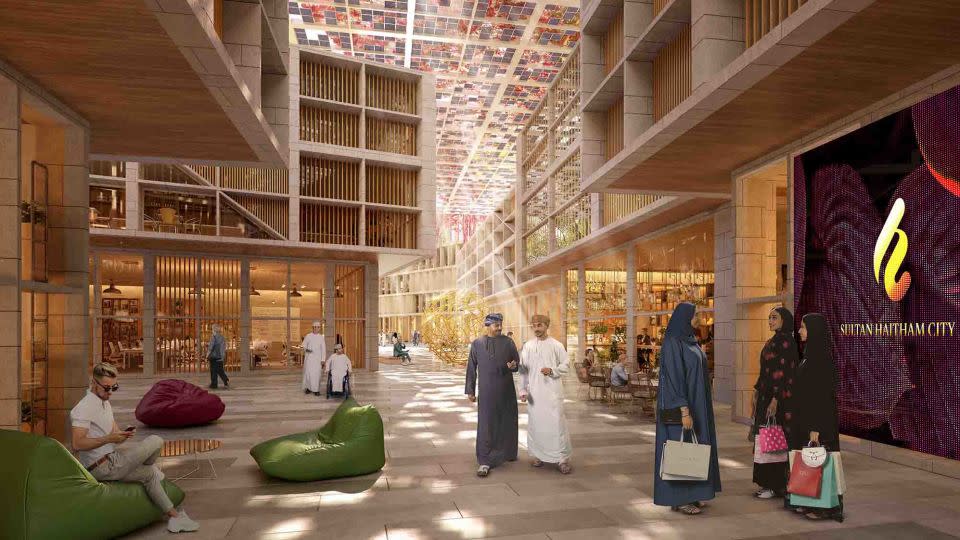Oman unveils plans for 100,000-person ‘smart’ city
- Oops!Something went wrong.Please try again later.
Oman has unveiled ambitious plans for a new 100,000-person “smart” city outside its capital, Muscat.
Set across 14.8 square kilometers (5.7 square miles), Sultan Haitham City will be roughly equivalent in size to Beverly Hills — but with almost three times as many residents.
The plan, which was shared exclusively with CNN by the US architecture firm Skidmore, Owings & Merrill (SOM), includes 20,000 homes, as well as a university, schools, health facilities and mosques. It is due to be built on a largely undeveloped site in Al-Seeb, several kilometers west of Muscat.

Work on the project is set to begin next year and will be completed in four stages. The first phase, which runs until 2030, will develop the 5-square-kilometer (1.9-square-mile) city center and six of the development’s 19 planned neighborhoods. The final phase is not scheduled to be completed until 2045.
In a press release, SOM said that the project will offer “vibrant public space, high-quality and affordable housing and smart urban mobility.”
While there is no universally accepted definition of a “smart city,” the term usually describes the use of sensors, cameras and internet-enabled devices — the so-called “internet of things” — to gather and use data from the built environment. While critics have raised privacy concerns, many urban planners believe big data can help cities deliver more effective and efficient public services, from traffic management to environmental monitoring.

In a statement, one of SOM’s senior associate principals, Bernhard Rettig, said that Sultan Haitham City’s “smart infrastructure” would be used to “monitor environmental factors such as air quality and water management.”
Plans also include a traffic management system that will use “real-time … data from cameras and speed sensors” to reroute vehicles and control traffic flow, the firm added.
Weaning off oil
The new development is part of Oman Vision 2040, a state-led initiative aimed at — among other things — increasing the use of renewables and reducing the country’s dependence on oil, which currently accounts for more than half of government revenues.
SOM said its master plan was designed to “minimize” the district’s “ecological footprint,” citing solar energy facilities, wastewater recycling, electric vehicle infrastructure and waste-to-energy plants. The architects could not specify how much of the district’s power would be generated by renewables, but pointed to Oman’s nationwide target of producing 30% of its electricity from green sources by 2030.
SOM said its design responds to high temperatures and humidity in Muscat, where temperatures have been known to exceed 110 degrees Fahrenheit. Newly released digital renderings of the project depict shady streets flanked by structures that appear to be made from brick and timber. Roads and buildings will be orientated to maximize shade and encourage natural ventilation, the firm said.

Elsewhere, a park will sit at the heart of the neighborhood, complete with plazas and “an interconnected network of open spaces.” The park will be created along a 7.5-kilometer-long stretch of dry river, which the architects say will be used to contain and capture floodwater in a coastal region prone to seasonal flooding.
In a statement, Oman’s Ministry of Housing and Urban Planning described the development as “an urban expansion” of Muscat. The new district is set to be connected to the Omani capital, which is located on the tip of the Arabian Peninsula, via a mass transit system.
SOM is known for buildings including Burj Khalifa, the world’s tallest skyscraper, though it has also designed urban master plans at sites including London’s Canary Wharf and the Millennium Park in Chicago, where the firm is headquartered.
Editor’s Note: Call to Earth is a CNN editorial series committed to reporting on the environmental challenges facing our planet, together with the solutions. Rolex’s Perpetual Planet initiative has partnered with CNN to drive awareness and education around key sustainability issues and to inspire positive action.
For more CNN news and newsletters create an account at CNN.com

